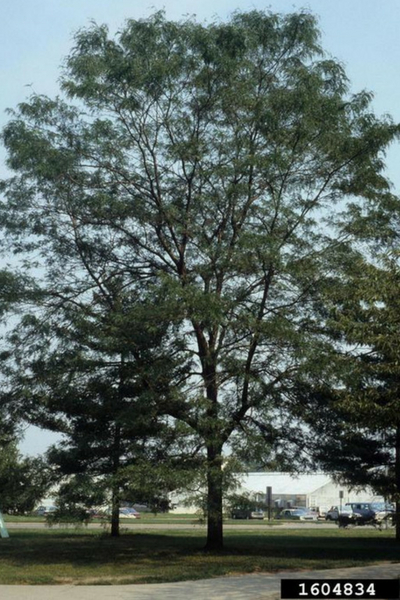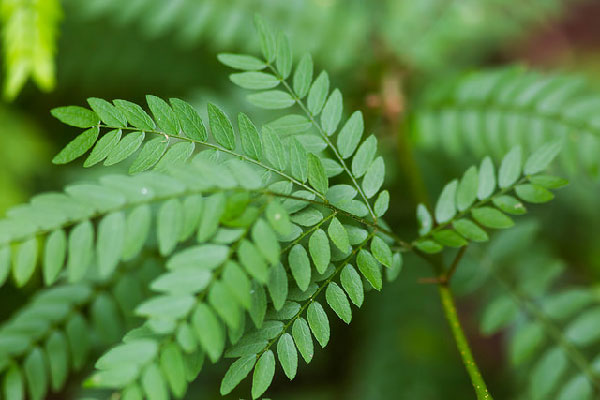Summertime tends to make us appreciate the shade. However, if that shade is too dense, grass will not grow underneath. A good tree for dappled shade is Honeylocust.
 Photo of Honeylocust tree from John Ruter, University of Georgia, Bugwood.org
Photo of Honeylocust tree from John Ruter, University of Georgia, Bugwood.orgThornless honeylocust, Gleditsia triacanthos var. inermis, is a great tree for Nebraska, as it is native. It grows 30-70 feet tall and wide. Honeylocust is a tree that tends to get a bad reputation because it grows wild and the wild form has very large thorns all over the trunk and branches. However, if you purchase a thornless variety you will not have to deal with the thorns.
Thornless honeylocust has alternate compound leaves. The leaves are pinnately or bipinnately compound which means that some are divided once and some are divided twice for many small leaflets per leaf. The full leaf is 1/3-1.5 inches long while each leaflet is 1/3-1 inch long. Honeylocusts produce a small, greenish-yellow flower in May and June that is not showy. From those flowers, it produces a long, flat, brown pod with the seeds that tends to curl and coil up through the season.
Thornless honeylocust trees are a good tree choice for a yard. The dappled shade is not as dense as shade that is provided from other tree choices with larger leaves. This will allow turf to grow better underneath the shade of this tree. The leaves, being so small, do not need to be raked up in the spring which gives it another great reason to be planted. However, thornless honeylocust trees can be over-planted in some locations. Be sure to practice diversity in your own landscape as well as the landscapes of the entire neighborhood you live in. Make sure you are not planting something that many of your neighbors already have in their landscape. For a good list of trees to plant that are underutilized, check out this article from the Nebraska Forest Service on Recommended Landscape Trees for Nebraska.
Thornless honeylocust can be used as a specimen tree or even in a windbreak setting. It will provide you with light shade, not full dense shade. There are some disease and insect problems with it, but overall it is fairly resilient. It will do well in bad soils and can even tolerate salt damage. It would be a good choice for planting near a roadway that many other plants cannot grow in due to the salt buildup.
Honeylocust wood has been used for pallets, crates, firewood, railroad ties, and fenceposts. It was formerly used to make bows. According to the USDA NRCS, honeylocust trees were used by Indians to make sweeteners and thickeners. Native Americans also would cook and eat the seeds or roast them to use the seeds as a coffee substitute. The wild, thorny straight species of honeylocust can become a weed species in pastures and along the edge of fields.
Thornless honeylocust is a great native tree to be planted for less fall cleanup and a more vigorous lawn underneath. However, be careful with it as it can be over-planted in some locations because it is so tough and can be planted where salt builds up from roads in winter. For an acreage or even in a front lawn, look at using thornless honeylocust in your landscape.

